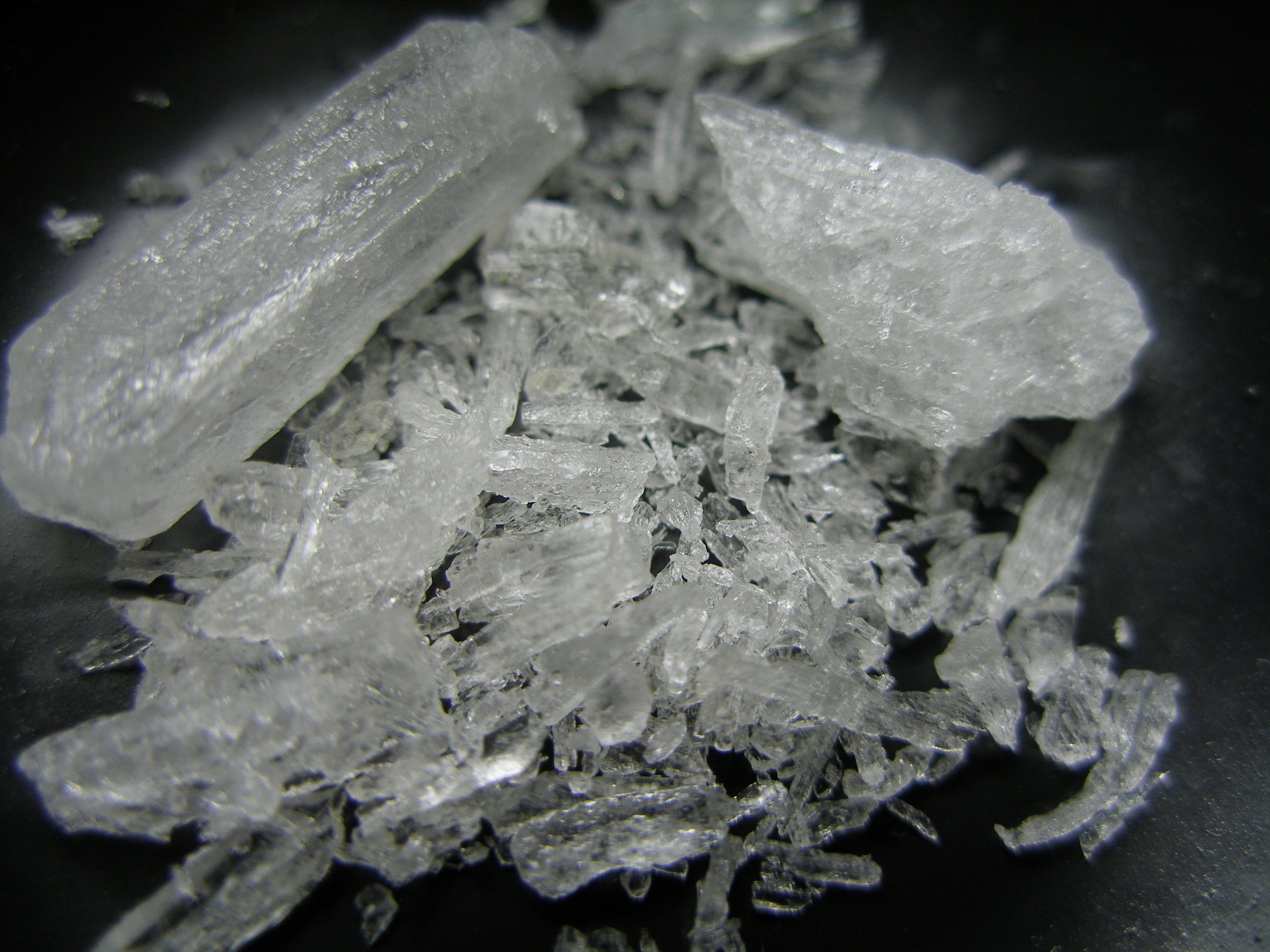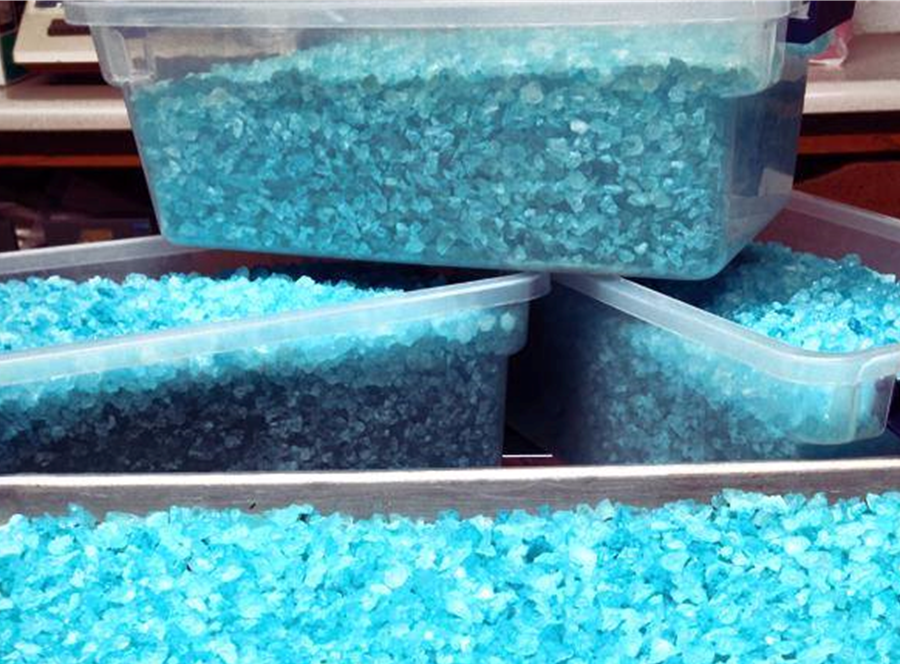Making Good v. Breaking Bad
/What’s addictive, rots your teeth, and plays a starring role in AMC’s hit New Mexico–based drama Breaking Bad?
Sugar, obviously. Why, what were you thinking?
Well, if you’ve seen the series you undoubtedly thought of methamphetamine, the illicit drug that launches an ordinary man down the dark path from chemist to dealer to head of a deadly empire. But just as the ruthless Walter White is played by a light-hearted, child-like Bryan Cranston, his ruinous meth is played by sweet, child-friendly rock candy.
That candy was crafted by the Candy Lady, a sweets artisan who’s run a shop in Albuquerque’s quaint Old Town neighborhood since the 1980s. The show’s producers approached owner Debbie Ball to request an edible prop back when they began filming in 2007 and she rose to the occasion, churning out batches of blue cotton candy–flavored “meth” that the actors crunched on between takes.
At a glance, then, sugar crystals and crystal meth look pretty similar—even though they couldn’t be more different at the molecular level. Does something as lovely as sugar really bear a chemical resemblance to something as destructive as meth?
Yes and no. Clearly both are predisposed to crystallization, but as we zoom in we’ll see that things get more complicated from there.
Crystallizing Sugar
Whenever a single substance solidifies, its component particles bind tightly to one another in either an amorphous form (like glass) or a well-ordered lattice (like snowflakes). The lattice itself is microscopic, defined by repetition on the atomic or molecular level, but if it’s allowed to build on itself uninterrupted its pattern can reach scales that are observable to the naked eye.
Table sugar is sucrose, C₁₂H₂₂O₁₁. As you observe whenever you stir it into your coffee, it dissolves easily in water—and if you’ve ever left a nearly-empty mug unwashed, you know it easily re-crystallizes when that water evaporates and forces it out of solution.
Sucrose molecules bind to each other in a monoclinic lattice, meaning two angles are perpendicular and the third is a bit off. The result is a rectangular prism with a parallelogram as its base. This shape is built into solid sugar at the molecular level, so even soft-seeming powdered sugar reveals its crystalline nature under a microscope. But this slanted lattice is most apparent when we let it grow crystals big enough for us to handle, as the Candy Lady does with her rock candy.
Crystallizing Meth
Methamphetamine (C₁₀H₁₅N) is more complex than sucrose in that it’s a chiral compound. That is, it has two distinct forms called enantiomers with identical atomic make-up but different molecular structures. The structures are mirror images of each other, like your left and right hands—an appropriate analogy, since a substance’s enantiomers are distinguished by scientists as “left” and “right.” That distinction can be surprisingly important; after all, your hands may look interchangeable, but you know that they have very different skill levels. To extend the analogy, the two mirror-image enantiomers of a molecule can behave very differently from one another despite having the same composition.
a (harmless) hit of levomethamphetamine courtesy of Vick's
“Methamphetamine” is thus an umbrella term for two distinct substances: levomethamphetamine (the left entantiomer) and dextromethamphetamine (the right). Both have the chemical formula C₁₀H₁₅N, but their different structures have wildly different effects in the human body. D-methamphetamine is a potent stimulant that induces an addictive euphoria and the other side effects associated with the illegal drug known as crystal meth. Meanwhile, L-methamphetamine—also C₁₀H₁₅N and still technically meth!—is sold as an over-the-counter nasal decongestant in products like Vick’s Inhaler.
The trouble faced by those who cook meth for the black market (like Breaking Bad’s antiheroes) is that nature often produces both the left and right enantiomers in equal quantities. According to the show’s writing, Walter’s “Blue Sky” meth owes its wild popularity to a high chemical purity: 99.1% of the enantiomer d-methamphetamine and none of the other, l-methamphetamine. But his secret recipe calls for the reductive amination of phenyl-2-propanone with methylamine, a method that actually results in a product containing equal portions of both enantiomers. In reality, Blue Sky would end up half l-methamphetamine (decongestant) and half d-methamphetamine (what his customers crave). 99.1%? More like 50%.
Hey, that’s fiction-writing for you. Back to the question of crystal structure...
The pure freebase form of methamphetamine is a clear liquid at room temperature. Add hydrochloric acid, though, and it crystallizes into a neutral hydrochloride salt called methamphetamine hydrochloride. As it solidifies it forms large slabs that shatter into shards.
In conclusion? To the naked eye, small grains of crystallized sugar and crystal meth may resemble each other. But look more closely and you’ll see that sucrose builds up slanted prisms, whereas meth settles into sheets that split into sharp splinters. When you get down to the microscopic level, the two substances couldn’t be more unlike (and we haven’t even started on their dramatically different effects on human physiology).
There is one thing that the Candy Lady and Walter White have in common, though: both their products must have a slight impurity. Neither sucrose nor meth have a blue tint, yet somehow their buckets of baggies are all a deep cyan. The only explanation? Both the candy-maker and the chemistry teacher add a dash of food coloring when they “cook.” Oh well—sometimes that extra visual kick makes things more fun.
This post was brought to you by the Royal Society of Chemistry, the Breaking Bad wiki, and the Candy Lady of Albuquerque (who also makes a green chile fudge that perfectly balances sweet and spiciness).
And to paraphrase her website’s disclaimer: New Mexicology does not endorse recreational and illegal drug use. Here we encourage people to use the show’s popularity and events to teach others.






